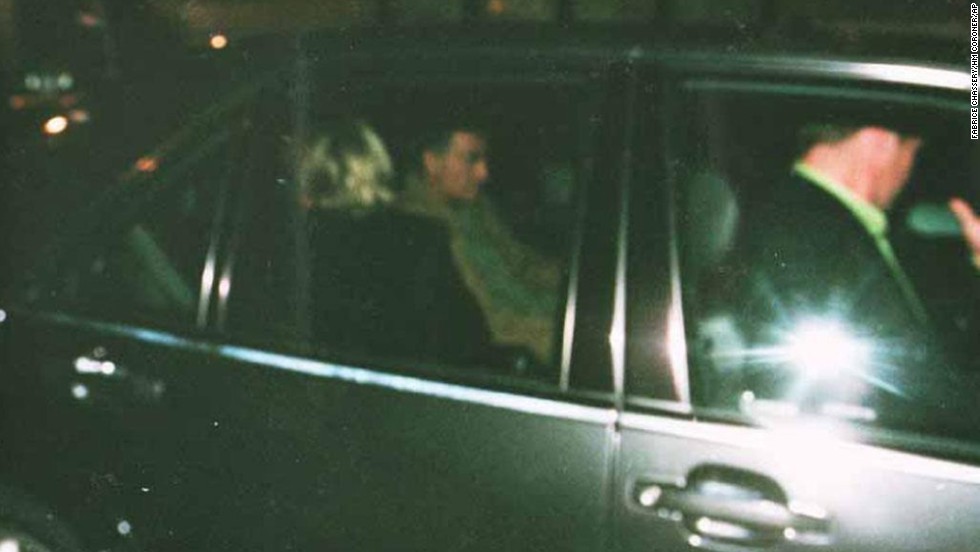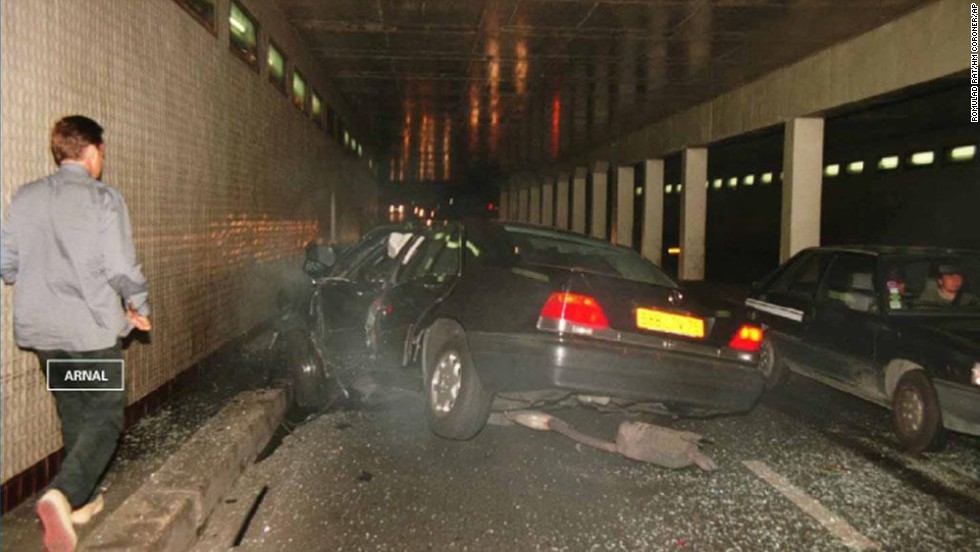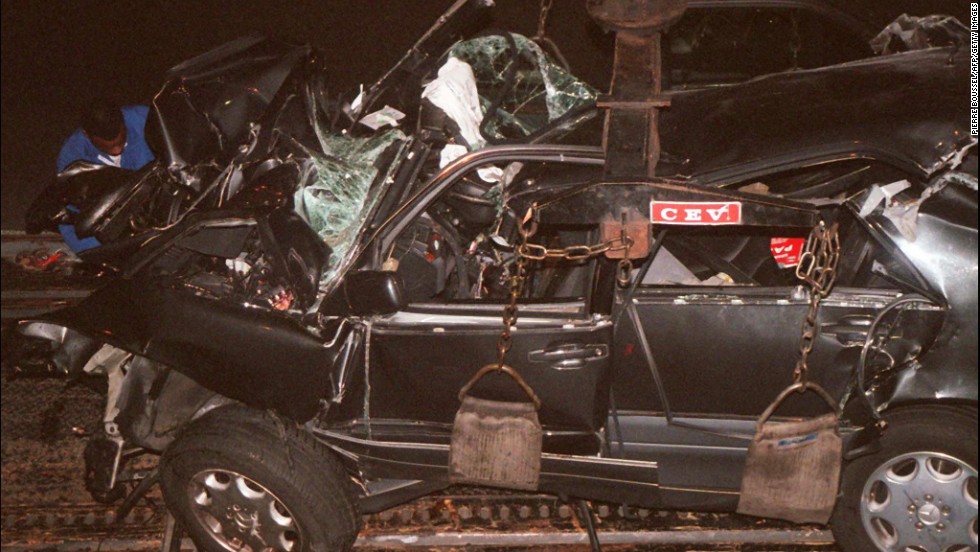Princess Diana Death Crash Photos: The Untold Story Behind The Tragic Event
Princess Diana death crash photos have long been a topic of fascination and heartbreak for millions around the world. The tragic incident on August 31, 1997, continues to evoke deep emotions and curiosity even decades later. Her untimely death in a Paris tunnel not only shocked the world but also left an indelible mark on history.
Princess Diana's life was one of extraordinary grace, compassion, and resilience. From her early days as the shy Lady Diana Spencer to becoming the "People's Princess," she touched countless lives through her humanitarian work and charisma. However, her story ended tragically in a high-speed car crash that has since been the subject of numerous investigations and debates.
In this article, we delve into the details surrounding Princess Diana's death, including the infamous crash photos, their implications, and the controversies that followed. Join us as we explore the events leading up to that fateful night, the aftermath, and the lasting legacy of the beloved princess.
Read also:Pauley Perrette Partner A Comprehensive Look At Her Relationships And Life
Table of Contents
- Princess Diana: A Brief Biography
- Details of the Fatal Crash
- The Controversial Crash Photos
- Official Investigation and Findings
- Conspiracy Theories Surrounding the Crash
- Media Coverage and Public Reaction
- Ethical Implications of Publishing Crash Photos
- Princess Diana's Enduring Legacy
- Lessons from the Tragedy
- Conclusion
Princess Diana: A Brief Biography
Early Life and Marriage
Born on July 1, 1961, Diana Frances Spencer grew up in a noble family with deep ties to the British monarchy. She married Prince Charles, heir to the British throne, in 1981, capturing global attention with one of the most watched weddings in history. Despite their initial happiness, the marriage faced numerous challenges, including infidelity and growing media scrutiny.
Humanitarian Work
Princess Diana was renowned for her dedication to humanitarian causes. She championed efforts against landmines, AIDS awareness, and children's welfare. Her compassion earned her the nickname "The People's Princess" and cemented her place in history as a symbol of kindness and empathy.
Biodata of Princess Diana:
| Full Name | Diana Frances Spencer |
|---|---|
| Date of Birth | July 1, 1961 |
| Date of Death | August 31, 1997 |
| Spouse | Prince Charles |
| Children | Prince William and Prince Harry |
Details of the Fatal Crash
On August 31, 1997, Princess Diana was involved in a catastrophic car accident in the Pont de l'Alma tunnel in Paris. The vehicle, a Mercedes-Benz S280, was driven by Henri Paul, the chauffeur of the Ritz Hotel, who was reportedly under the influence of alcohol. Travelling at high speed, the car collided with a pillar in the tunnel, resulting in severe injuries to all occupants.
Key Facts About the Crash:
- Princess Diana was accompanied by her boyfriend, Dodi Fayed, and bodyguard Trevor Rees-Jones.
- Henri Paul, the driver, died instantly in the crash.
- Dodi Fayed also succumbed to his injuries shortly after the incident.
- Princess Diana passed away in a Paris hospital the following day.
The Controversial Crash Photos
Origins of the Photos
Following the crash, photographers reportedly entered the tunnel and captured images of the wreckage and victims. These Princess Diana death crash photos quickly became the center of controversy, sparking outrage over the invasion of privacy and lack of respect for the deceased.
Read also:Unleashing The Adventure The Dungeon Pack 5e
Impact on Public Perception
The release of these photos fueled public anger towards the paparazzi and media outlets. Many questioned the ethics of publishing such graphic images, arguing that they served no purpose other than to exploit tragedy for profit. The incident highlighted the need for stricter regulations on press conduct and privacy rights.
Official Investigation and Findings
An official inquiry into the crash concluded that Henri Paul's intoxication and excessive speed were the primary causes of the accident. The investigation also revealed that the paparazzi's relentless pursuit of the vehicle contributed to the chaotic situation, though they were not directly responsible for the crash itself.
According to the French judicial report, the Mercedes was traveling at speeds exceeding 100 mph, making it nearly impossible for the driver to maintain control. This finding underscored the dangers of reckless driving and the pressure exerted by the media on public figures.
Conspiracy Theories Surrounding the Crash
Alternative Explanations
Despite the official findings, various conspiracy theories emerged suggesting foul play. Some claimed the crash was orchestrated by members of the British royal family, while others pointed fingers at MI6 or other intelligence agencies. Although no concrete evidence supports these claims, they continue to persist in popular culture.
Role of the Media
The media played a significant role in perpetuating these theories, often sensationalizing details and speculating without credible sources. This highlights the importance of responsible journalism and fact-checking in reporting sensitive events.
Media Coverage and Public Reaction
The media coverage of Princess Diana's death was extensive and emotionally charged. Millions tuned in to watch her funeral, which became a global event symbolizing collective grief. The outpouring of tributes from fans worldwide demonstrated her profound impact on society.
Public reaction to the crash photos varied, with many condemning their publication as disrespectful and exploitative. This incident prompted discussions about media ethics and the balance between public interest and individual privacy.
Ethical Implications of Publishing Crash Photos
Publishing Princess Diana death crash photos raises serious ethical concerns regarding consent, dignity, and journalistic integrity. While some argue that such images serve an educational purpose, others believe they violate the sanctity of death and exploit tragedy for commercial gain.
Journalists and media organizations must adhere to ethical guidelines when covering sensitive topics, ensuring that their reporting respects the rights and dignity of those involved. This case serves as a reminder of the power and responsibility wielded by the press.
Princess Diana's Enduring Legacy
Princess Diana's legacy extends far beyond her tragic death. Her commitment to humanitarian causes and compassionate nature continue to inspire millions worldwide. Through the work of her sons, Prince William and Prince Harry, her values and ideals live on, addressing issues like mental health, environmental conservation, and social justice.
Her influence on fashion, charity, and public service remains unparalleled, ensuring that her memory endures for generations to come.
Lessons from the Tragedy
The death of Princess Diana offers valuable lessons about the dangers of media obsession, the importance of privacy, and the need for empathy in public discourse. It reminds us to treat others with kindness and respect, even in the face of adversity.
By learning from this tragedy, we can strive to create a world where the dignity of all individuals is upheld, and the pursuit of truth is balanced with compassion and understanding.
Conclusion
Princess Diana death crash photos remain a contentious subject, evoking strong emotions and prompting reflection on media ethics and societal values. The tragic events surrounding her death serve as a poignant reminder of the impact of public scrutiny on personal lives.
We invite you to share your thoughts and reflections in the comments section below. Additionally, explore other articles on our site to learn more about Princess Diana's life, achievements, and enduring legacy. Together, let us honor her memory by promoting kindness, empathy, and positive change in the world.
Sources:


